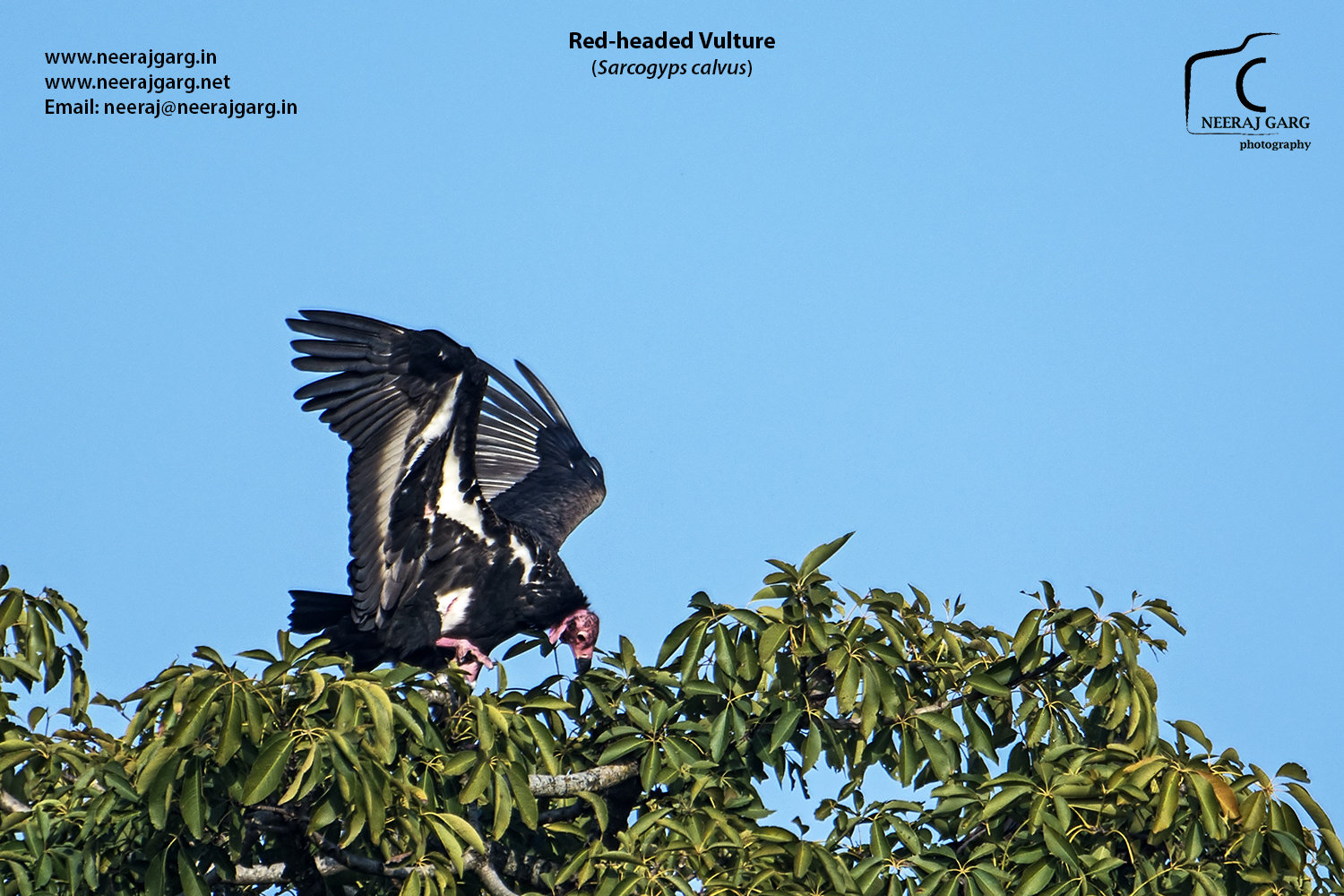
Its a medium-sized vulture of 76 to 86 cm (30 to 34 in) in length, weighing 3.5–6.3 kg (7.7–13.9 lb) and having a wingspan of about 1.99–2.6 m (6.5–8.5 ft). It has a prominent naked head: deep-red to orange in the adult, paler red in the juvenile. It has a black body with pale grey band at the base of the flight feathers.
On an afternoon in Jan, 2015, when we were trying to catch a glimpse of something interesting, Nischalji pointed towards hovering vultures at a spot in Dhikala grass lands at CTR. Within minutes these vultures started hovering in a tight circle. We expected a kill by a tiger nearby and rushed towards the spot. By the time we reached there, these vultures had settled on the top of a very high tree, this tree was not close to any track, and we could not go close to it.We first tried to locate the kill, but soon realized that there was no kill and these vultures were settling down perhaps to take rest on the tree.
The red-headed vulture (Sarcogyps calvus) is also known as the Asian king vulture, Indian black vulture or Pondicherry vulture. It is mainly found in the Indian subcontinent, with small disjunct populations in some parts of Southeast Asia.
Its a medium-sized vulture of 76 to 86 cm (30 to 34 in) in length, weighing 3.5–6.3 kg (7.7–13.9 lb) and having a wingspan of about 1.99–2.6 m (6.5–8.5 ft). It has a prominent naked head: deep-red to orange in the adult, paler red in the juvenile. It has a black body with pale grey band at the base of the flight feathers. The sexes differ in colour of the iris: males have a paler, whitish iris, whilst in females it is dark brown.
The red-headed vulture used to be declining, but only slowly; in 2004 the species was uplisted Near Threatened from Least concern by the IUCN. The widespread use of the NSAID Diclofenac in veterinary medicine in the sub-continent has caused its population to collapse in recent years, however. Diclofenac is a compound now known to be extremely poisonous to vultures. The red-headed vulture population has essentially halved every other year since the late 1990s, and what once was a plentiful species numbering in the hundreds of thousands has come dangerously close to extinction in less than two decades. Consequently it was up-listed to “Critically Endangered” in the 2007 IUCN Red List.
Focal length equivalent to 800 mm on 35 mm format, f/4, ISO 100, 1/1000 seconds, Nikon equipment.
COPYRIGHT © 2023 NEERAJ GARG